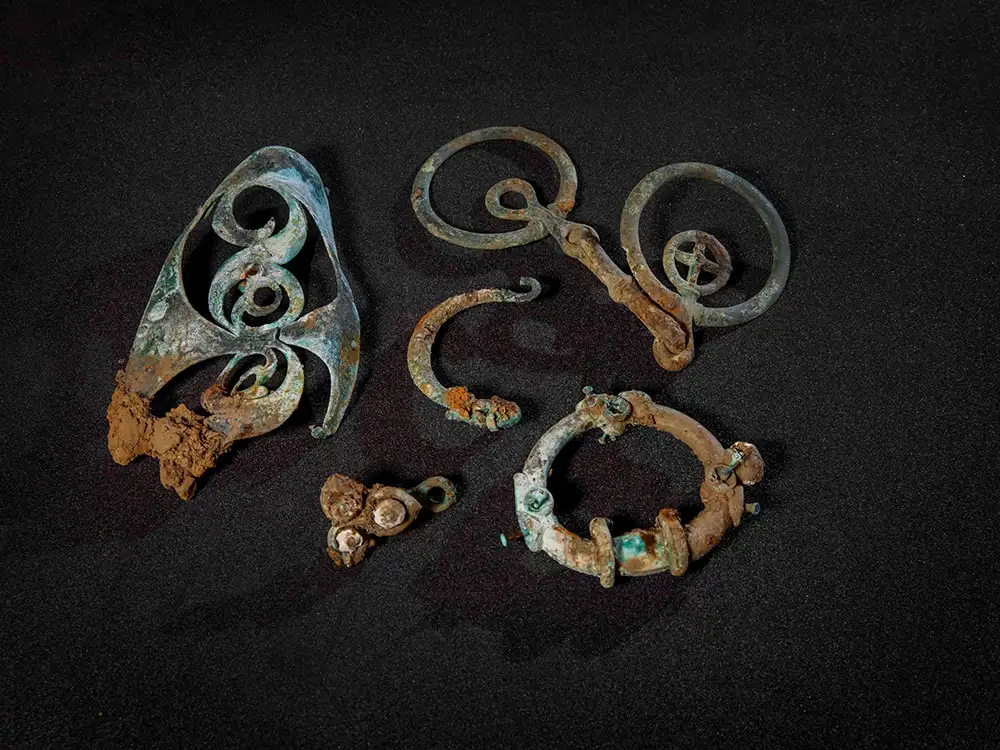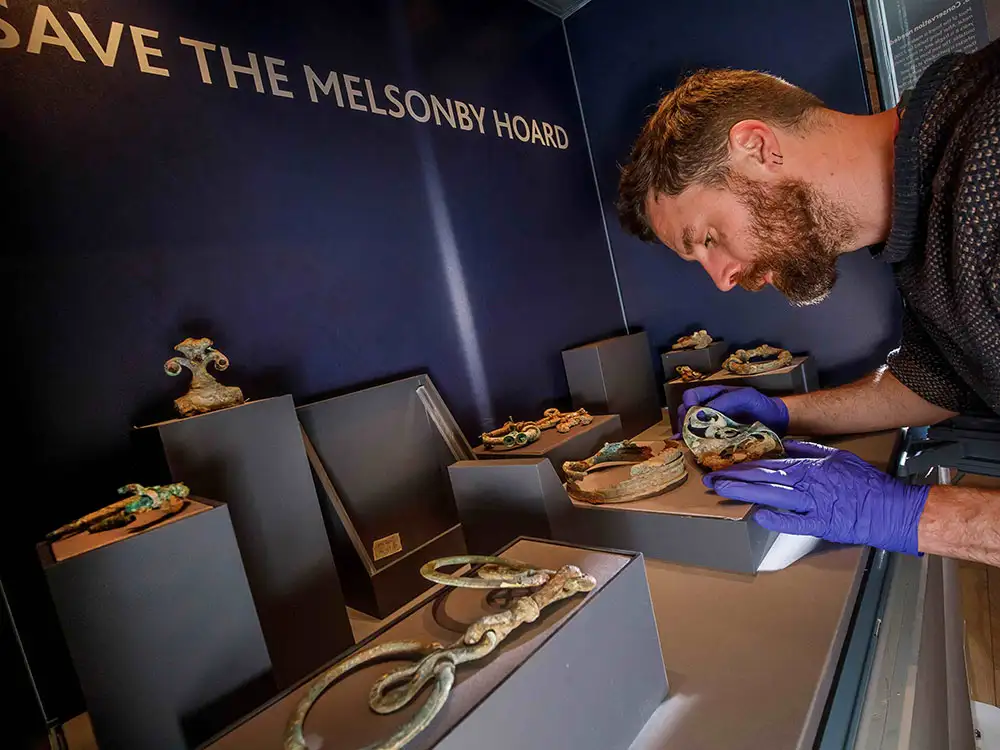The Yorkshire Museum has saved a 2,000-year-old historical collection for York and the nation.
It has acquired the Melsonby Hoard thanks to a National Heritage Memorial Fund grant of £192,096, together with public fundraising.
Discovered by a metal detectorist in 2021 near the village of Melsonby in North Yorkshire, the Melsonby Hoard is a collection of over 800 Iron Age artefacts.
It includes objects such as chariot wheels, cauldrons, horse bridles and ceremonial spears.
Detectorist Peter Heads made the find and reported it to the proper authorities, and a team of Durham University archaeologists, with advice from the British Museum, took great care to excavate the hoard from two ditches.
Funds from the British Museum and £54,000 in donations from the public via the online crowdfunder have also helped to bring the hoard permanently to the Yorkshire Museum.
Here, further research and conservation will be carried out to learn more about its fascinating contents and ensure its long-term preservation. It will become an important part of the museum’s public collection.
Chief executive of York Museums Trust Kathryn Blacker said: “The Melsonby Hoard is a significant piece of Yorkshire’s history and York Museums Trust are delighted to have secured the funding to acquire the hoard for the nation.
“Thanks to the incredible support of the National Heritage Memorial Fund, as well as generous donations from members of the public, the hoard will remain here in Yorkshire, to be made available for everyone to see and to enjoy.


“We remain committed to researching and conserving these unprecedented finds to improve our understanding of our shared past and securing them for future generations.”
Simon Thurley, chair of the National Heritage Memorial Fund, said: “The Melsonby Hoard throws bright new light on Iron Age life in Yorkshire and beyond.
“We are pleased to support this acquisition which will keep the hoard intact, in the county in which it was buried and enable research to take place to gain a deeper insight into its origin and history.”
